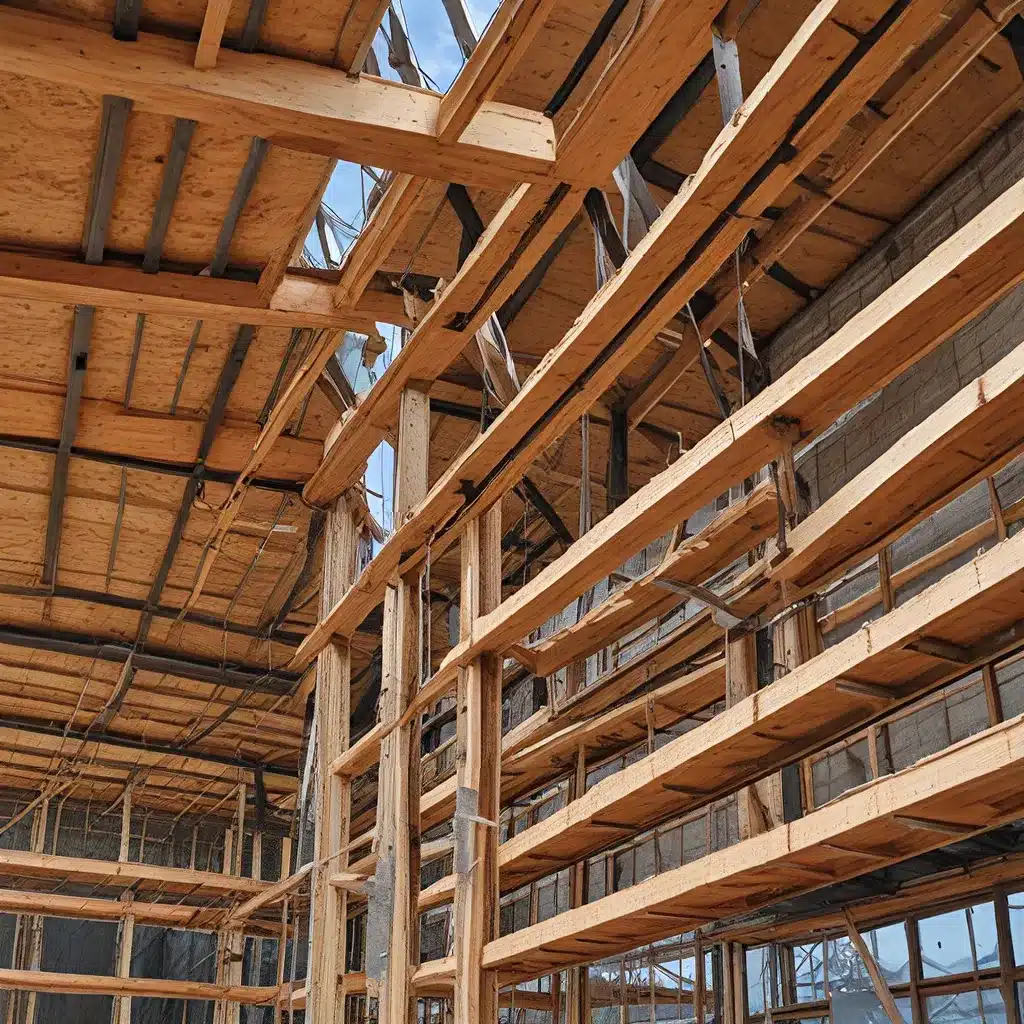
As the world grapples with the pressing issue of climate change, the construction industry has come under increasing scrutiny for its substantial contribution to global greenhouse gas emissions. The carbon footprint of traditional building materials like concrete and steel is often substantial, making it imperative that we explore more sustainable alternatives.
In my journey towards a greener future, I’ve been fascinated by the innovative solutions emerging in the realm of sustainable building materials. From timber to bamboo, and even hemp, the construction industry is undergoing a remarkable transformation, one that promises to significantly reduce the environmental impact of our built environment.
Rethinking the Carbon Footprint of Construction
When I started researching this topic, I was shocked to learn that the construction industry is responsible for nearly 40% of global carbon emissions. That’s an astounding figure, and it’s a stark reminder of the critical role we all have to play in addressing this challenge.
As I delved deeper, I discovered that the carbon footprint of a building goes far beyond just the construction phase. The extraction, processing, and transportation of traditional building materials like concrete, steel, and brick are all major contributors to the overall carbon impact. And let’s not forget the energy-intensive processes required to maintain and operate these structures over their lifespan.
Sustainable Building Materials: The Game-Changers
Thankfully, there is a growing movement towards more sustainable building materials that can help reduce the carbon footprint of construction. One material that has caught my eye is timber. Not only is it a renewable resource, but timber also has a significantly lower carbon footprint compared to concrete and steel. In fact, some studies suggest that using timber in construction can reduce the carbon footprint by up to 75%.
Another fascinating alternative is bamboo. This fast-growing, highly renewable grass has remarkable strength and durability, making it a viable option for structural elements in construction. The best part? Bamboo has an even lower carbon footprint than timber, making it a true eco-friendly choice.
But the sustainable building materials revolution doesn’t stop there. Hemp is another material that has caught the attention of forward-thinking architects and builders. Hemp-based insulation, for example, not only provides excellent thermal and acoustic properties, but it also actively sequesters carbon dioxide during its growth. This makes it a highly effective way to offset the carbon footprint of a building.
Embracing the Sustainable Future
As I continue to explore the world of sustainable building materials, I’m struck by the sheer creativity and innovation happening in this space. Researchers and industry leaders are constantly pushing the boundaries, exploring new materials and techniques that can help us reduce the environmental impact of our built environment.
One area that particularly excites me is the integration of renewable energy into building design. Imagine a future where our homes and offices not only use sustainable materials, but also generate their own clean energy through solar panels, wind turbines, or even geothermal systems. This holistic approach to sustainable construction is a game-changer that can help us achieve true carbon neutrality.
Of course, the transition to a more sustainable construction industry won’t be without its challenges. There are economic, regulatory, and societal barriers that will need to be overcome. But with the growing demand for eco-friendly solutions and the rapid advancements in sustainable building technologies, I’m confident that we’re on the right track.
As I reflect on my journey through the world of sustainable building materials, I’m filled with a sense of optimism and excitement. The future of construction is greener, cleaner, and more innovative than ever before. And I’m proud to be a part of this movement, doing my small part to reduce the carbon footprint of the built environment and create a more sustainable world for generations to come.
If you’re as passionate about this topic as I am, I encourage you to explore the services offered by our company. We’re dedicated to providing innovative solutions that can help you incorporate sustainable building materials into your projects. Together, we can make a real difference in the fight against climate change.

